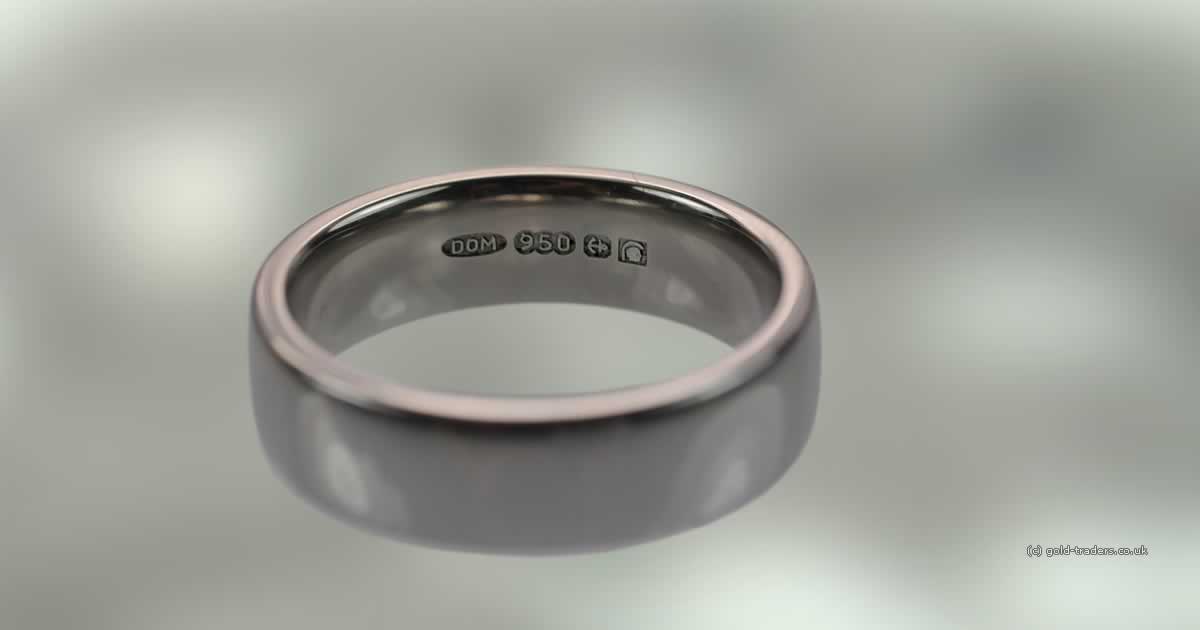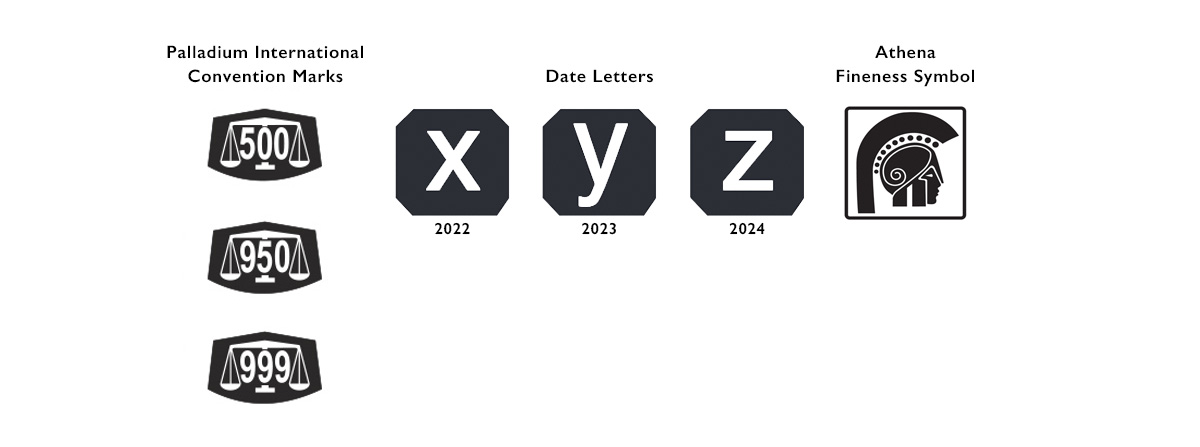
In the United Kingdom, hallmarking serves as an official quality control mark of a precious metal’s authenticity, and is now a legal requirement. Although hallmarks have been placed on gold and silver products in England since the 14th century, palladium was not legally required to have hallmarks until the Hallmarking Act was amended in 2009, with the changes coming into effect in 2010. I’ve put together this simple palladium hallmark guide, which I hope you find useful.
A Brief Introduction to Palladium
Palladium is a relative newcomer in terms of metallurgy, only being discovered by British chemist William Hyde Wollaston in 1803. Compare that to gold and silver, which have both been known to man since antiquity, and platinum, which was first mentioned in European literature in 1557.
Most of the supply of palladium goes towards the manufacture of catalytic converters in the automotive industry. This is its main industrial use, and the incredible spikes in the price of the precious metal is the main reason why many motorists have found their catalytic converters have been nicked from their car. Note – we don’t purchase auto-cat material!
Aside from its industrial use, palladium is a useful precious metal to use in jewellery, both on its own and as an excellent bleaching agent to create white gold. In this regard, it holds the advantage over nickel in that it’s strongly hypoallergenic. It’s also used as an investment article, being available in bullion coins and bullion bars, but the market for investment palladium is dwarfed by gold and silver.
Pre-2010 Palladium Hallmarks
Although palladium was not legally required to be hallmarked before 2010, some palladium items were. Standard alloy hallmarks in millesimal fineness were 500, 950 and 999, set inside a trapezium. The traditional fineness symbol for fine palladium is the Greek goddess Athena, who allegedly gained the epithet pallas after she killed him in battle, and is what the precious metal is named after. Athena can still be seen on modern palladium as an optional hallmark.

The similarities in colour between platinum and palladium caused confusion, which was not helped by the fact that the hallmarks for both metals consisted of shapes with straight lines. Platinum hallmarks are made of a ‘house’ shape as below, which is almost indistinguishable when the two different metals are compared against each other.

UK Palladium Hallmarks from 2010 Onwards
Concerns around the similarity of the fineness hallmarks for platinum and palladium led to an amendment to the Hallmark Act 1973 which brought palladium under the umbrella of official hallmarking requirements. As such, the following hallmarks are compulsory on palladium:
Sponsor’s Mark / Maker’s Mark
This denotes the manufacturer of the palladium jewellery. Each registered mark is unique and can represent an individual or a company. Between 2 and 5 initials can be used inside a surrounding shield shape. It comprises of the initials chosen by that individual or firm inside a surrounding shield shape. The shape of the shield can vary, but most take the form of a rectangle. Below is an example of a sponsor’s mark from the London Assay Office.

Millesimal Fineness

Millesimal fineness, ie. parts per thousand, was made compulsory on gold, silver and platinum products in 1999. This also includes palladium when it was brought under the legislation in 2010. The shape of the surrounding shield is an indicator of the precious metal. In this case, three round ovals representing palladium surround the three-digit fineness figure, which is either 500, 950 and 999.
–
Assay Office Mark
This stamp tells you which assay office tested and hallmarked the item. Today there are four official assay offices in the United Kingdom: London, Sheffield, Birmingham and Edinburgh. Historically there were 11 assay offices in the British Isles, but by 1965 there were only five: the four UK offices and the Dublin Assay office in the Republic of Ireland. It’s very likely that any palladium jewellery in the UK will have the assay office marks shown below.

Optional Palladium Hallmarks

Although not compulsory under current legislation, assay offices will occasionally include traditional stamps on their hallmarks, such as the letter stamp (not required since 2010), the fineness symbol (officially replaced by millesimal fineness in 1999) and the international convention mark (common control mark, recognised by the UK in 1972). See the examples above of the optional stamps used on some palladium hallmarks.
So, palladium articles manufactured and sold after 2010 in the UK will have at least three stamps on their hallmark. A common pattern with British hallmarks now is to have the three compulsory stamps plus the traditional fineness symbol and the letter stamp denoting the year. You might also be able to spot a common control stamp, depending if the item was intended to be sold/exported internationally. Commemorative marks also exist, such as Queen Elizabeth II’s numerous jubilee hallmarks and King Charles III’s accession hallmark.
Sell Scrap Palladium UK
Have you got some unwanted palladium items? Gold Traders UK offer some of the best prices in the country for scrap palladium. Coins, rings, bangles, medals, bars, necklaces – you name it, we buy it.
Have a look at our ‘How it Works’ page for more details on the process. Selling your scrap palladium by post or in person at our secure trade counter in Royal Wootton Bassett is straightforward and simple – it could be the easiest cash you’ve ever made!
Further Reading
Leave a Reply

